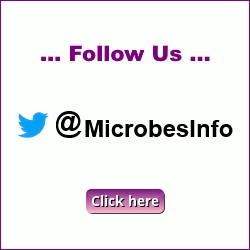CCFB promotes the study and teaching of fungi, lichens etc.
Categories for Fungi
Links for Fungi:
-
http://ccfb.cornell.edu/
-
An on-line reference to all things mycological! Gives information about fungal infections and mycology in general. This web site is dedicated to timely dissemination of information about fungal infections via the world-wide web.
http://www.doctorfungus.org/ -
The word fungus usually invokes images of mushrooms and toadstools. Although mushrooms are fungi, the forms which a fungus may take are varied. There are over 100,000 species of described fungi and probably over 200,000 undescribed. By The Encyclopedia of Earth (EoE), an electronic reference about the Earth, its natural environments, and their interaction with society.
http://www.eoearth.org/view/article/51cbedd37896bb431f694324/ -
A resource available to the Fungal Genetics research community and to educational and research organizations in general.
http://www.fgsc.net/ -
The goals of FMGP are to (i) sequence complete mitochondrial genomes from all major fungal lineages, (ii) infer a robust fungal phylogeny, (iii) define the origin of the fungi, their protistan ancestors, and their specific phylogenetic link to the animals, (iv) investigate mitochondrial gene expression, introns, RNAse P RNA structures, mobile elements ...
http://megasun.bch.umontreal.ca/People/lang/FMGP/FMGP.html -
Fungi are eukaryotic organisms and include yeasts, mould and mushrooms. Some fungi are multi-cellular, while others, such as yeasts, are unicellular. By The Science Learning Hub, a national project designed to support the effective teaching of science in New Zealand schools.
https://www.sciencelearn.org.nz/resources/590-fungi -
A selection of links for the benefit of field mycologists in the UK.
http://fungus.org.uk/ -
Most of the VAM species used experimentally in the literature are represented in INVAM.
http://invam.wvu.edu/ -
Aiming to render recent scientific and technical information on mycotoxins. By Dr. Homero Fonseca.
http://www.micotoxinas.com.br/ -
A synoptic key for determination of fungal genera. – the mycological identification site.
http://www.mycokey.com/ -
World-wide Directory for Mycology and Lichenology.
http://www.fungi.sav.sk/myco/ -
A WWW resource of clinically significant mycological information.
http://www.mycology.adelaide.edu.au/ -
An internet site containing information about diversity of fungi. Mycology.Net aims to: provide online data on the biodiversity of fungi, including lichens, especially their taxonomy, distribution, phylogeny, descriptive characters, collections, literature etc.; inform about mycological institutions, journals, databases (link sections) and persons engaged in mycology; facilitate interaction between databases and support the development of standards for data exchange; reach scientists all over the world and invite them to use the platform and to help improving the quality and quantity of data; maintain a discussion forum for mycological subjects and the further development of the platform itself.
http://www.mycology.net/ -
WWW pages devoted to the science of mycology (the study of the fungi) and the hobby of mushrooming (the pursuit of mushrooms).
http://www.mykoweb.com/


